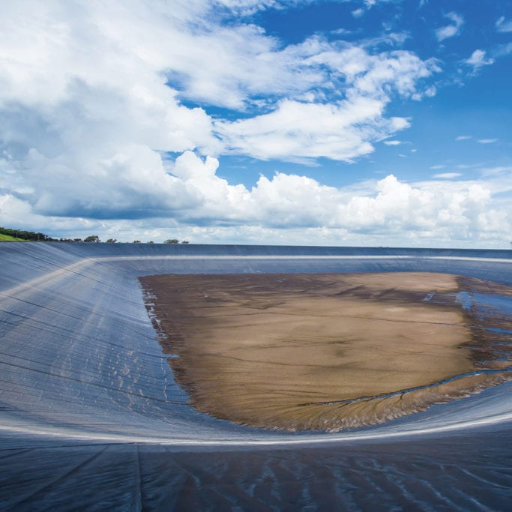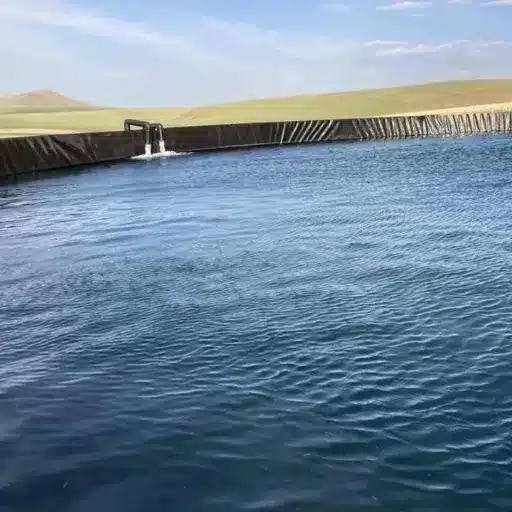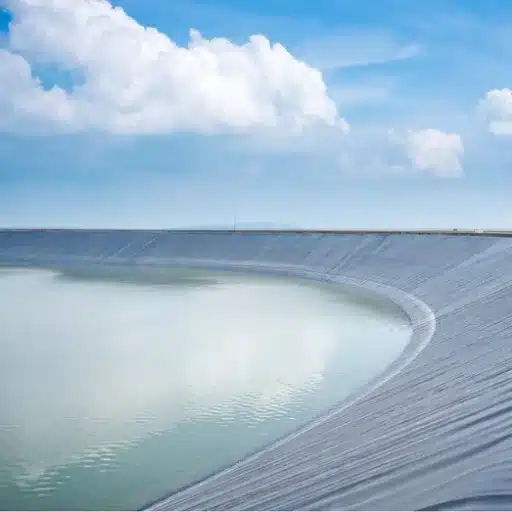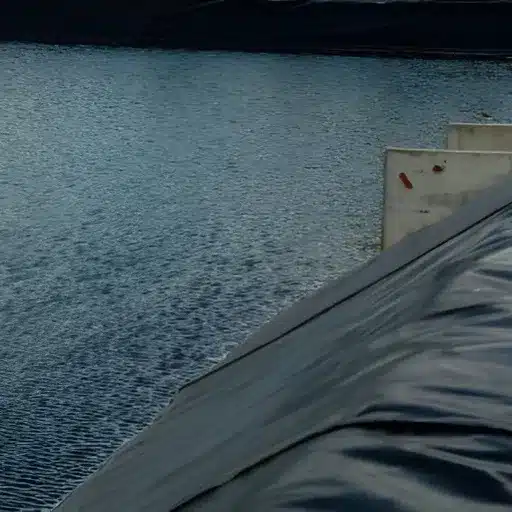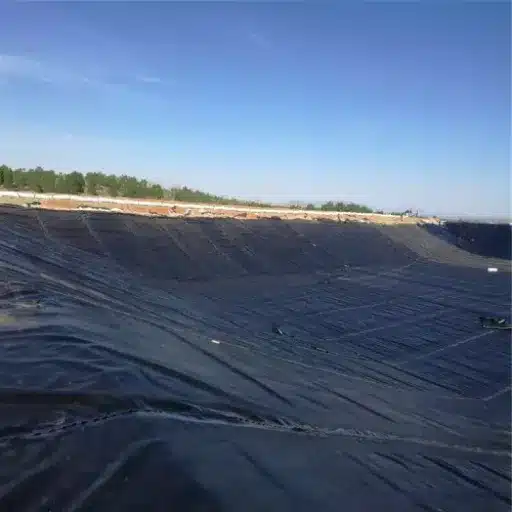High-Density Polyethylene (HDPE) geomembrane liners have become the pillars of modern engineering and environment-related conservation projects. This comprehensive guide explores the properties, applications, installation processes, and extensive benefits of HDPE geomembranes across various industries.
Introduction to HDPE Geomembranes
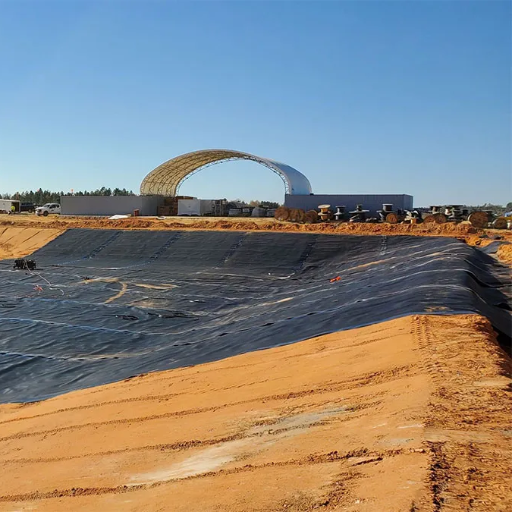
HDPE geomembrane liners are synthetic liners made from high-density polyethylene, engineered with superior durability, chemical resistance, and impermeability. They serve critical roles in industries such as waste management, water containment, and environmental protection, forming reliable barriers against leakage and contamination.
What is an HDPE Geomembrane?
HDPE Geomembrane refers to synthetic liners manufactured using high-density polyethylene polymer resin. These barriers are designed to prevent the migration of fluids, gases, or contaminants, making them industry standards for their exceptional resistance to chemicals, durability, and flexibility.
Key Performance Specifications:
- Thickness Range: 0.5 mm to 3 mm
- Tensile Strength: 25–40 MPa
- Elongation at Break: Over 700%
- Water Vapor Transmission Rate: Under 1 × 10⁻⁷ cm³/s cm²
- Service Life: 50+ years with proper installation
Composition and Properties of HDPE
High-density polyethylene (HDPE) is a petroleum-based thermoplastic polymer with an exceptional strength-to-density ratio. Its molecular structure features minimal branching, contributing to superior intermolecular forces and tensile strength.
| Property | Specification | Benefit |
|---|---|---|
| Density | 0.94 to 0.97 g/cm³ | Superior strength and durability |
| Melting Point | 120-130°C (248-266°F) | Thermal stability in various environments |
| Chemical Resistance | Resistant to acids, alkalis, solvents | Suitable for harsh environments |
| UV Resistance | Enhanced with carbon black addition | Long-term outdoor exposure capability |
HDPE Geomembrane Applications
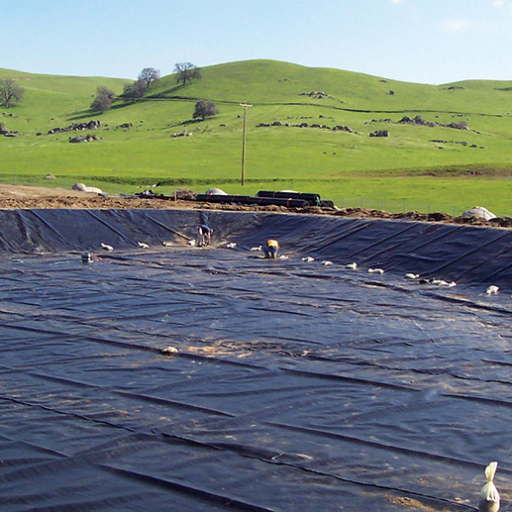
Due to their exceptional versatility, HDPE geomembranes find applications across multiple industries, from agriculture to mining operations, providing reliable containment solutions in challenging environments.
Agricultural Applications
HDPE liners revolutionize modern agriculture by providing sustainable water management and soil protection solutions. They excel in various agricultural settings:
- Irrigation Systems: Ponds, reservoirs, and canals
- Waste Containment: Manure lagoons and biogas digesters
- Water Conservation: Reducing seepage and evaporation losses
- Contamination Prevention: Protection from fertilizers and pesticides
Performance Impact: Farms utilizing HDPE-lined irrigation systems can reduce water waste by up to 50%, significantly improving resource efficiency in water-scarce regions.
Industrial Applications
Mining Sector
- Tailings storage facilities
- Heap leaching operations
- Evaporation ponds
- Environmental containment systems
Industry Adoption: More than 80% of mining operations utilize geomembranes to prevent soil and groundwater contamination.
Waste Management
- Landfill primary and secondary liners
- Leachate collection systems
- Waste storage facilities
- Multi-layer containment systems
Environmental Impact: Geomembranes in waste containment reduce leachate leakage rates by 99%, significantly minimizing environmental hazards.
Water Treatment
- Water treatment plant reservoirs
- Canal linings
- Wastewater treatment lagoons
- Storage pond applications
Energy Sector
- Secondary containment for fuel storage
- Solar pond linings
- Hydraulic fracturing operations
- Renewable energy project containment
Advantages of HDPE Geomembranes
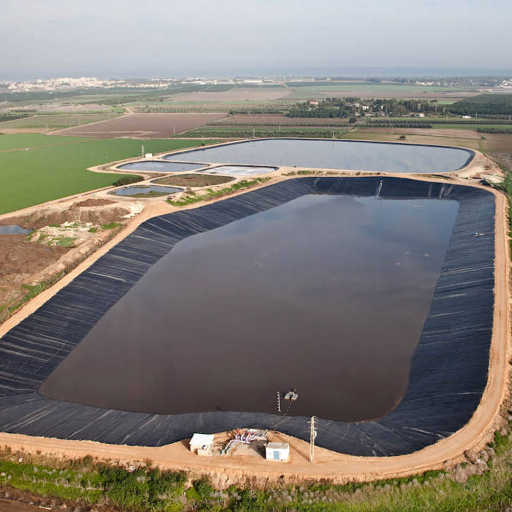
Durability and Longevity
HDPE geomembranes are renowned for their exceptional durability across various challenging applications:
| Durability Factor | Performance Metric | Real-World Impact |
|---|---|---|
| Service Life | 30+ years proven performance | Long-term reliability in harsh conditions |
| Tensile Strength | Above 24 MPa | Excellent performance under high stress |
| UV Resistance | 50+ years outdoor exposure | Minimal degradation in direct sunlight |
| Chemical Resistance | Resistant to oils, acids, alkalis | Suitable for aggressive chemical environments |
Cost-Effectiveness Analysis
| Material Type | Installation Cost (per sq ft) | Expected Lifespan | Long-term Value |
|---|---|---|---|
| HDPE Geomembrane | $0.50 – $1.00 | 50+ years | Excellent |
| Clay Liners | $1.50+ | Variable | Good |
| PVC Liners | $0.75 – $1.25 | 10-20 years | Fair |
| EPDM Liners | $0.80 – $1.30 | 10-20 years | Fair |
Installation Process of HDPE Geomembrane
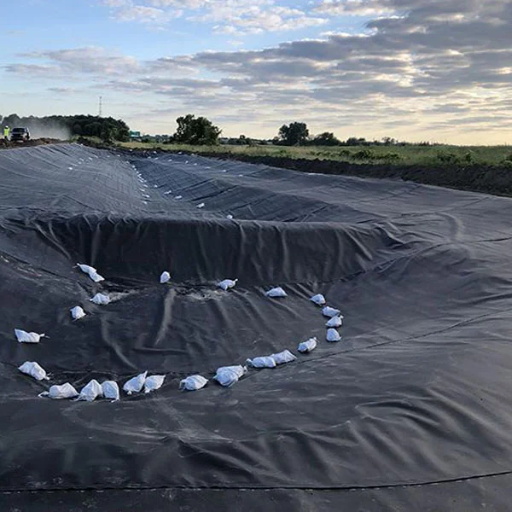
Site Preparation
Proper site preparation is crucial for ensuring the longevity and performance of HDPE geomembrane installations:
- Site Clearing and Grading
- Complete removal of debris, rocks, and vegetation
- Elimination of sharp objects that could puncture the membrane
- Creation of smooth, uniform surface
- Subgrade Compaction
- Achieve 90% of Maximum Dry Density (MDD) minimum
- Prevent future settlement issues
- Follow Proctor test specifications
- Protection Layer Installation
- Geotextile fabric or fine sand cushion placement
- Protection against abrasion and friction
- Buffer between liner and ground
- Anchor Trench Preparation
- Excavation depth: 12-18 inches typically
- Perimeter anchoring system installation
- Prevention of liner movement during operation
Quality Control and Testing Procedures
Strict quality control measures ensure optimal performance and compliance with industry standards (ASTM and ISO):
Testing Methods
- Visual Inspections: Detection of pinholes, wrinkles, and tears
- Destructive Testing: Material sample analysis for tensile strength and seam integrity
- Non-Destructive Testing: Air pressure, vacuum box, and electrical leak surveys
- Pre-Installation Material Testing: Thickness, density, and carbon black content verification
Quality Standards:
- Seam Peel Strength: 60-100 lbf/in
- Seam Shear Strength: >120 lbf/in
- HDPE Density: >0.940 g/cm³
- Carbon Black Content: 2-3% for UV protection
Maintenance and Repair
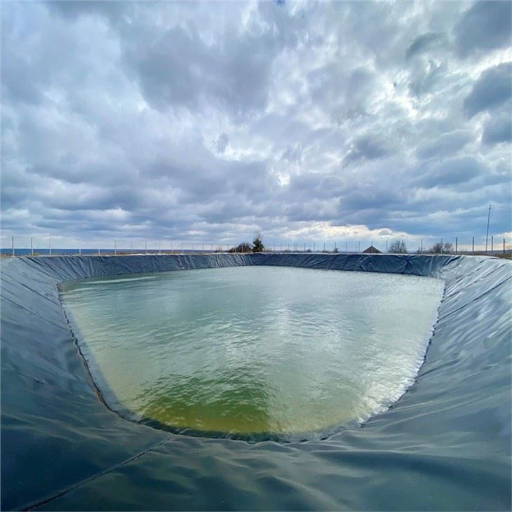
Regular Inspections and Monitoring
Maintaining HDPE lining systems requires consistent monitoring and proactive maintenance:
- Inspection Frequency: Monthly to quarterly based on application
- Advanced Monitoring: Drone surveys with thermal/infrared cameras
- Real-time Detection: Automated leak detection systems
- Cost Savings: Up to 25% reduction in maintenance costs through early detection
Repair Procedures
Effective repair techniques maintain system integrity and extend service life:
- Damage Assessment
- Size and type evaluation
- Location mapping
- Severity classification
- Repair Methods
- Patching: For minor punctures and tears (90-95% strength restoration)
- Panel Replacement: For extensive damage areas
- Welding: Professional fusion welding for permanent seals
- Quality Verification
- Air pressure testing
- Vacuum box testing
- Mechanical stress testing
Conclusion
HDPE geomembranes represent a cornerstone technology in modern environmental protection and industrial containment applications. Their exceptional durability, chemical resistance, and cost-effectiveness make them the preferred choice for projects requiring long-term reliability and environmental safety. As technology continues to advance and environmental regulations become more stringent, HDPE geomembranes will remain essential components in sustainable infrastructure development and environmental stewardship initiatives.
Reference sources
- Grand View Research
- Title: HDPE And LLDPE Geomembrane Market Size Report, 2030
- Description: This report provides insights into the market size, growth rate, and applications of HDPE geomembranes across various industries.
- URL: Grand View Research
- BPM Geomembrane
- Title: High Density Polyethylene Geomembrane
- Description: This source explains the technical specifications, benefits, and applications of HDPE geomembranes, particularly in waste management and environmental protection.
- URL: BPM Geomembrane
- Future Market Insights
- Title: Geomembrane Market Size & Forecast, 2024-2034
- Description: This report highlights the adoption of HDPE geomembranes in sectors like mining, agriculture, and waste management, emphasizing their chemical resistance and durability.
- URL: Future Market Insights
Frequently Asked Questions (FAQs)
What is an HDPE geomembrane and why is it widely used?
An HDPE geomembrane is a high-density polyethylene liner used for containment purposes, valued for its exceptional tensile strength and chemical resistance. These properties make it essential for applications like landfills, waste containment, and water reservoirs.
How does thickness affect HDPE geomembrane performance?
Thickness directly impacts performance – thicker liners offer greater puncture and tear resistance for demanding applications, while thinner liners provide adequate containment for less critical projects at lower costs.
What factors influence geomembrane selection?
Key selection factors include material properties, environmental conditions, and project-specific requirements. HDPE geomembranes excel in high-temperature environments and chemical resistance applications.
How do HDPE geomembranes compare with LLDPE?
HDPE offers superior strength and chemical resistance but less flexibility than LLDPE. HDPE suits applications requiring durability, while LLDPE works better where bending or movement is expected.
What are the main containment applications?
Primary applications include landfills, mining operations, agricultural ponds, and water reservoirs. HDPE membranes effectively prevent leakage and contamination across various industries.
Are HDPE geomembranes environmentally friendly?
Yes, HDPE geomembranes support environmental sustainability by preventing contaminant leakage and serving as the backbone for sustainable waste management practices. Additionally, HDPE is recyclable, further enhancing its environmental credentials.

